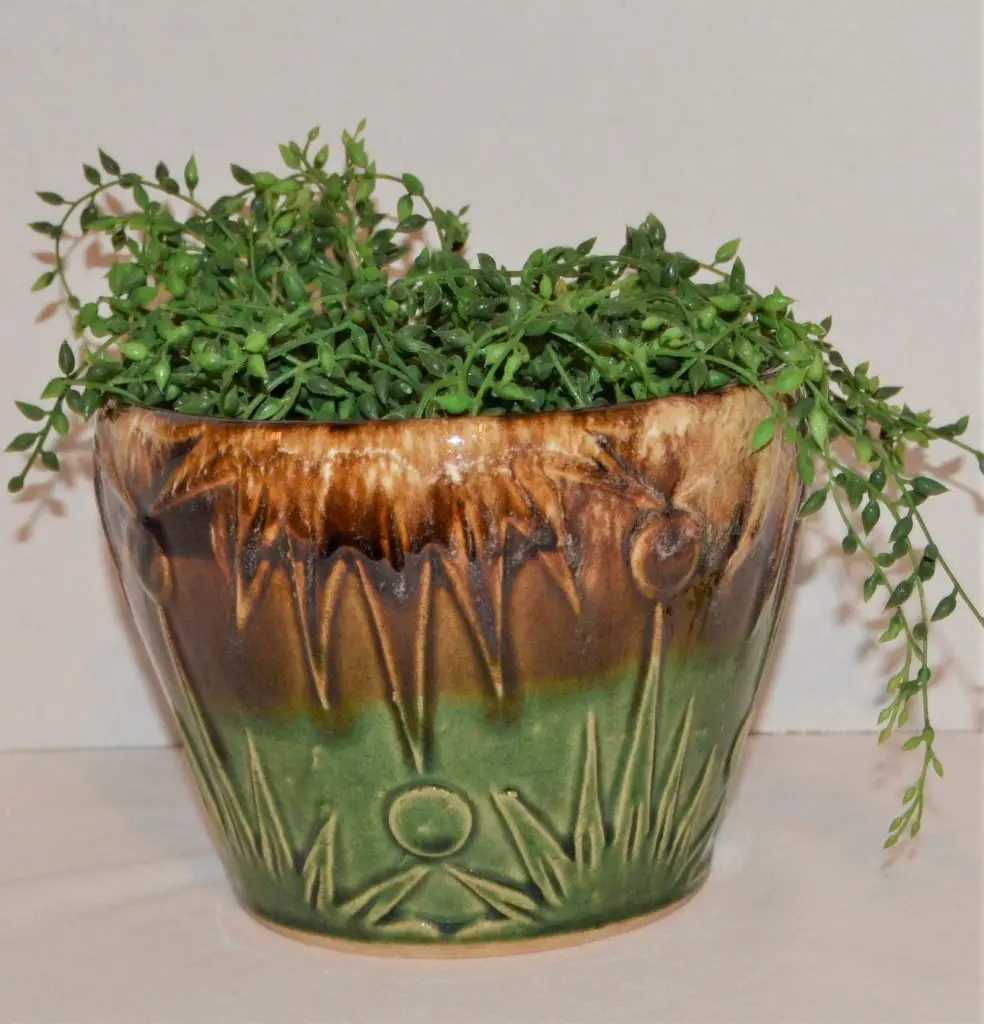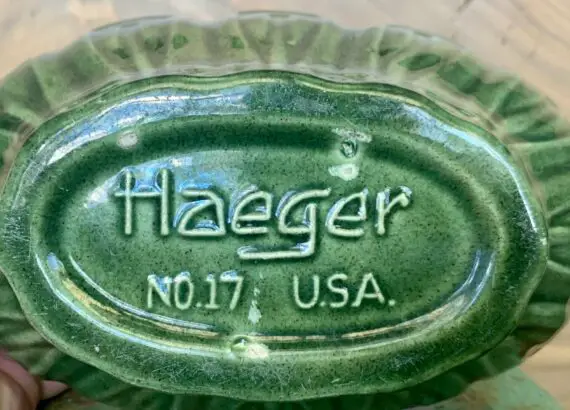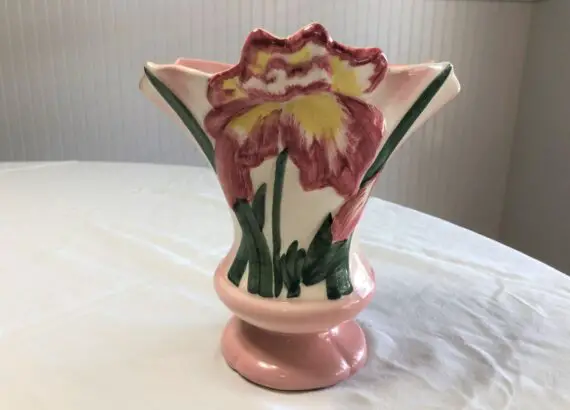What is Roseville Pottery? History, Facts, Description
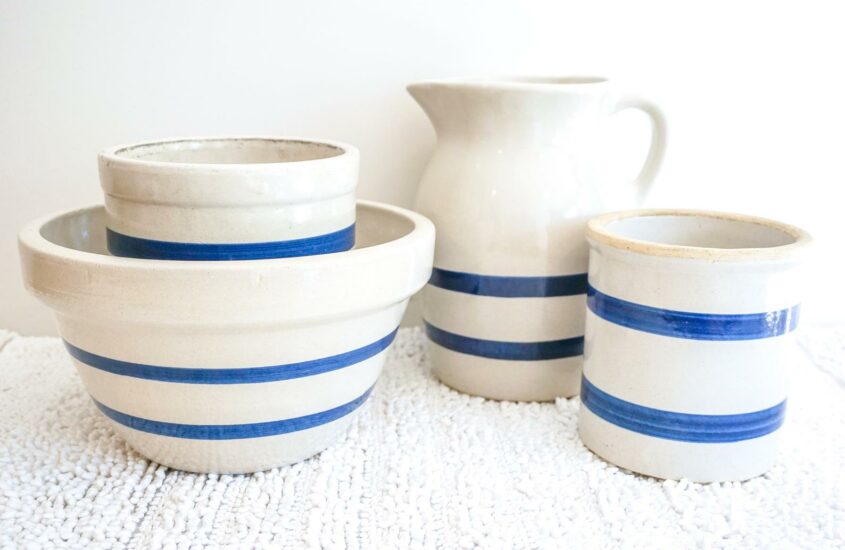
Roseville Pottery was practically non-existent before the 1900s. Also, Roseville Pottery was founded in Roseville, Ohio, in 1890 by J. F. Weaver. The company was first known for making basic materials like vases, plaster ware, spikes, etc.
They also had some limited production lines. There was a move to a more modern production center in the year 1898. The company produced the first art pottery of a high standard in 1900, and they named it Roseville Rozane.
Table of Contents
Early History of Roseville Pottery
In 1904, there was a change in the directors of the company. The director’s name was Frederick Rhead. In this capacity, he engaged in the making of rare wares. Some of these art wares include things such as the Aztec, Della Robbia, and Fudji.
Also, they were made to compete with other pottery houses, such as the Rookwood Pottery House.
There was a decline in the request for this expensive and handmade pottery in the 1910s. As a result of this, the Roseville administration shifted its emphasis to more marketable pottery products.
They did this to accommodate current needs and trends. People saw this as one of the greatest strengths of the company. This was because they could adapt and thrive with every market change. As a result, the company consistently produced the most demanding patterns when they compared it to its competitors.
Change in Administration
Between the years 1915 and 1920, there were more administrative changes and recruitment. This included the founder, J. F. Weaver, retiring in 1918. Also, Ferell replaced Root. In addition, they hired George Kraus as the head of supervision and pottery development.
These two newcomers collaborated to create sought-after Roseville art. Blackberrys, sunflowers, wisteria, and the Baneda were among the pottery designs.
Roseville Pottery closed down in 1954. However, it is famous for consistently bringing new ideas to the market for over 60 years. Enthusiasts still revere Roseville and are a favorite of art collectors.
Roseville Designers and Pottery Styles
From the beginning of the Roseville pottery in 1904 to the closure of their production camp in 1954, Roseville boasted some of the best hands in the pottery industry.
Each of the craftsmen listed below contributed somehow to the old pottery patterns that art buyers still seek today.
We will look at some notable contributors below.
Fredrick H. Rhead and Harry Rhead
Mr. Weaver, the company’s founder, hired a design master of English descent named Fredrick H. Rhead. He served as the director of art in Roseville for six years before his brother took over from him. They worked on several commissioned pieces, including Egypto and the Aztecs.
The name stemmed more from the need to sound exotic and exclusive than from the influence of the pottery style.
As we know, the older the art pieces, the more expensive they tend to be. These pottery works from the earlier days of production are more valuable due to their age, and the potters craft them strictly by hand. Also, they cost from $1000 to as much as $30000+.
Here are some well-known works by the Rheads brothers:
- Della Robbia – Della Robbia was unique because they chipped away and replaced it with a 3d decoration. One can trace this influence back to a list of sources, including the Egyptians and the Persians.
- Mongol-The collection consists of several shades of red.
- Donatello– The green range inspired this collection.
- Egypto-The essential shade was green. The Egyptians influenced the shapes.
- Aztec-One could also attribute it to Egyptian influence. The styling was simple, with colors such as blue and tan.
Frank Ferrell
He was a resident of Ohio. Frank was head of art design from the year 1918 up until the last days of the company. Also, over 100 collections are attributed to his tenure. Apart from the fact that he was the head of art, he is also credited with creating originals for some of Rochelle’s best-selling pottery. These include:
- Pinecone-These colors are typically brown, green, or blue. They come in several sizes and shapes.
- Wisteria-It was a popular design in Roseville with beautiful shapes.
- Blackberry- is a combination of brown, green, and red serving as a contrast.
- Snowberry-Unlike the other designs, this one has fewer surface ornaments. Instead, the art has a lot of unified lines that draw your attention.
- Dogwood: It was among the first set of flowery styles from the company, and collectors still revere it.
Identifying Roseville Pottery
The marks on their pottery works are typically used to identify them. These marks can help you know when the potter crafted your artwork and its worth.
But due to the markings not having consistency, the process of identification might be confusing.
Mark Placement
One would usually find the marks at the back of the artwork. The marks would be seen on the part of the ware that is unglazed. This usually consists of alphanumeric keys. In some of the art, the markings are inscribed, while in others, the markings give a bulge on the ware.
Roseville pottery is not all labeled. Some pieces may have lost their markings due to wear and tear. For example, the designs made around 1927 were marked using a foil label that came in black and triangular shapes. Also, the pieces did not come with markings.
Examples of Roseville Pottery From Etsy
Below you’ll find some amazing examples of Roseville pottery from Etsy that you can buy.
Roseville 1940 Dealer Sign, rare Roseville Original Terra Cota Sign, Roseville Collector Sign
This is a Roseville pottery made in 1940. This is a decorative piece, and you can place it in your home to add to its aesthetics
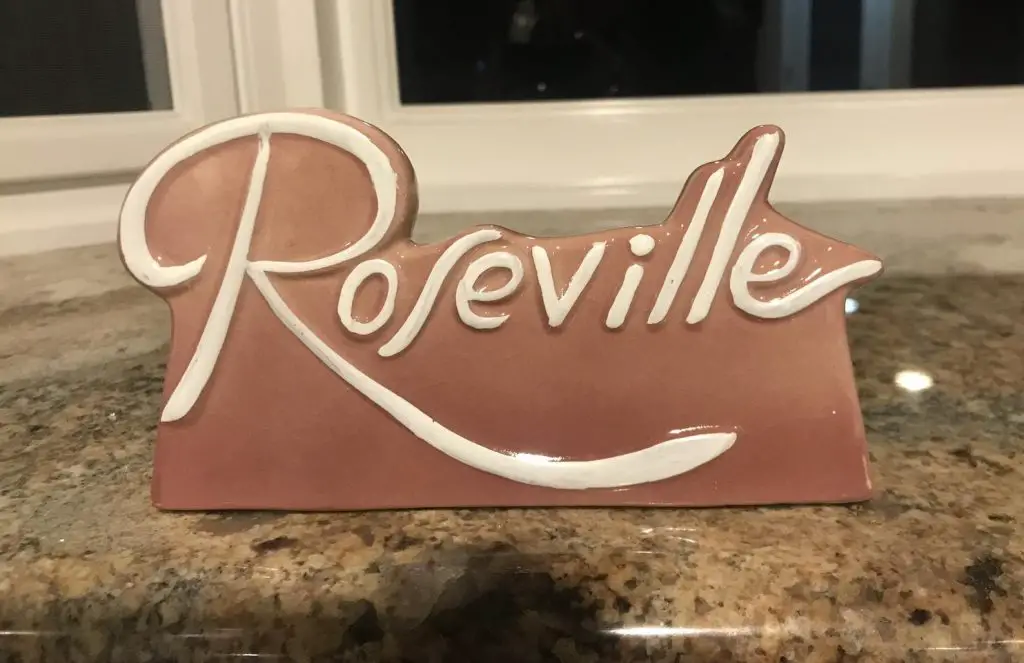
Roseville Crock Pottery Bowl, Pitcher, and Utensil Holder
This is a Roseville pottery design for the home. It entails a pottery Bowl, a pitcher, and a Utensil holder
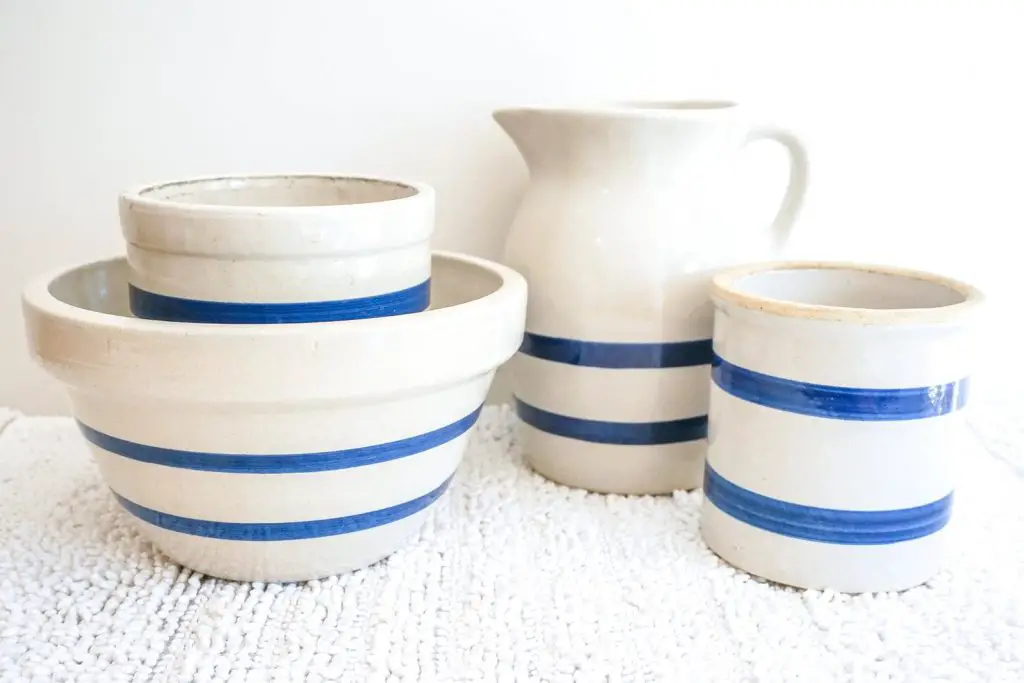
1993 Beaumont Brothers Salt Glazed Pottery Jam Jar or Honey Pot – Green Spongeware
Fantastic Salt Glazed Pottery Jam Jar or Honey Pot with the Original Lid in the Green Spongeware Design made by Beaumont Brothers Pottery of Roseville, Ohio. This treasure stands 4.5″ tall by 3.25″ wide.
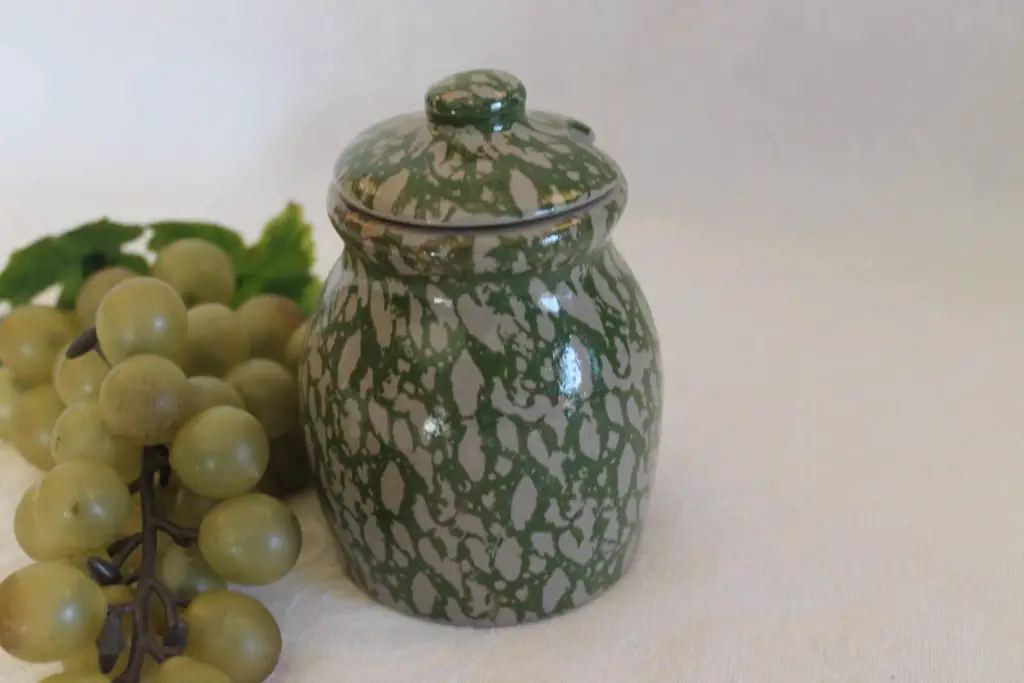
Roseville Silhouette Vase no. 782 7″ Vase Turquoise Blue Green Leaves Blades of Grass Roseville USA Art Pottery.
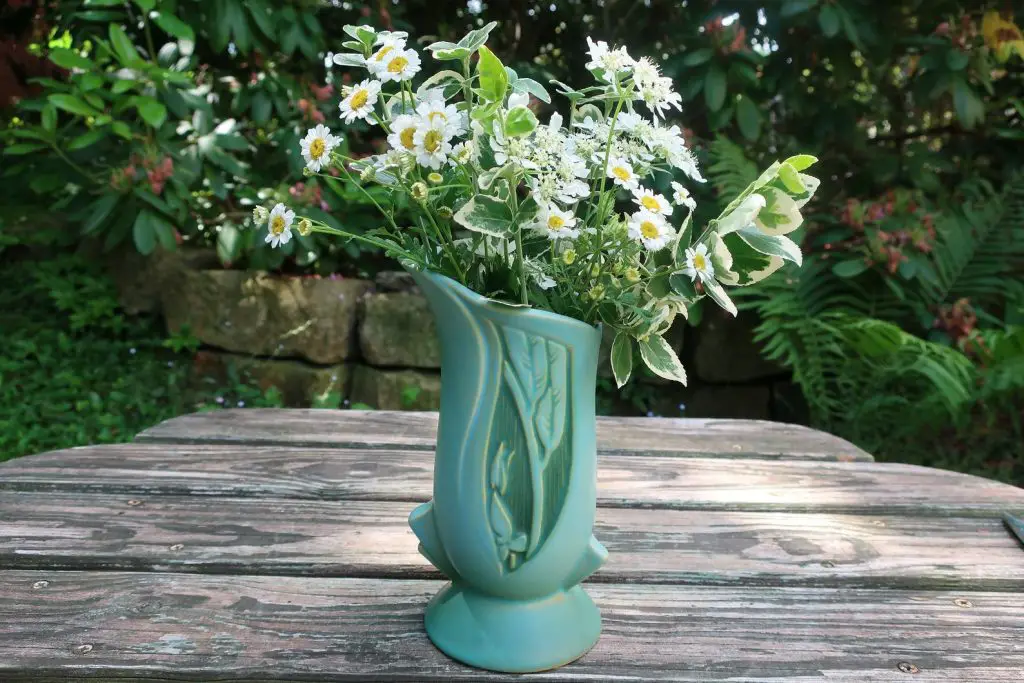
Authentic Roseville Pottery Blue 7″ Flower Basket – 383-7, Magnolia, Authentic
This is a vintage design make from the 1940s
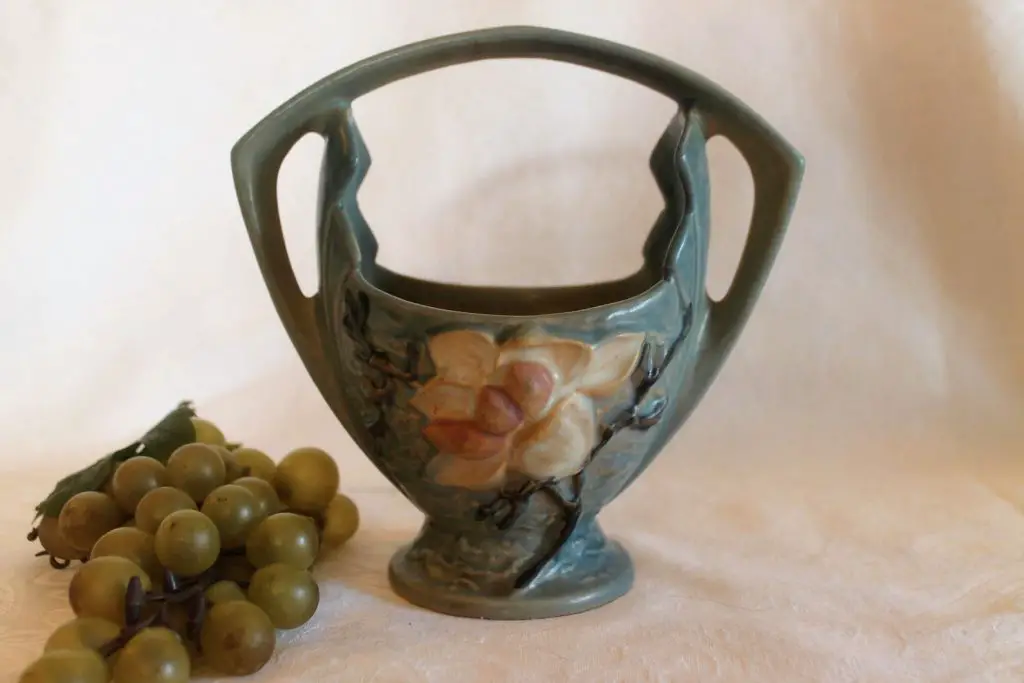
Vintage Pottery Roseville Sun & Moon
This is a vintage plant holder made before the 2000s. The color is green and brown.
